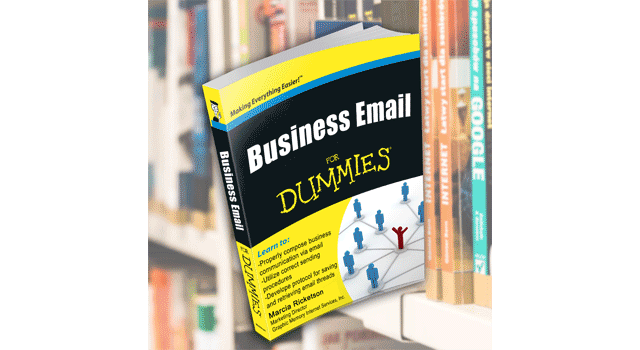
Business Email Can be Confusing....
In this day and age where texting and shortcode are the norm, it can be difficult to maintain proper business email etiquette. Although there are schools of thought in regards to the necessity of proper grammar and content composition within an email, I do maintain there are some guidelines to be followed to keep a business tone in communication. Here are some pointers as to how I try to keep on point with my emails to business associates.
Addressing Your Email
- The TO: field should display only the recipient's display name: There is never a need to address an email to Marcia Ricketson <marketing@graphicmemory.com>. If you know the recipient well, your address book should have them filed by display name. If you do not know them, the email address only should be entered into this field.
- Use the CC field correctly: If a recipient is to act on a message, they belong in the TO: field. Using the CC field can be confusing since the recipients might not know who is supposed to act on the message. It should be used only as an FYI to the CC recipients.
- Do not use CC/BCC fields for mass mailings: Contacts can be exposed in this way and you could possibly breach their privacy. Use mail merge or an email distribution software.
- Use short, descriptive subjects: This will help if you ever need to find the email again. If previous email threads are used to open a new email thread, change the subject line of the new one to avoid confusion.
Composing a Business Email
- Greeting the receiver of your email: Use the proper salutation depending upon how familiar you are with the recipient. Utilize a combination of formal and informal to match the relationship you have:
- Dear Dr. John Doe
- Good Morning Dr. Doe
- Good Morning John
- Hi John
- Hey dude (doubtful this would be appropriate, but hey, it's a combination)
Composing a Business Email (CONT...)
- Write concise emails: Do not make an email longer than it needs to be. Short and concise emails are more effective than long-winded ones. If an email is too long, recipients will only skim over the content. Use bullets when appropriate.
- Do not use all capitals: Capitals come across as AGGRESSIVE and the recipient can be intimidated by it, even if that is not the intention.
- Do not use texting abbreviations: OMG and LOL social acronyms and not appropriate for business communication.
Completing the Email
- Include email signature: Check if the company is adding email signatures centrally at the server level or whether you should add your own. Avoid adding personal touches, inspiring quotes are for personal messages, not for business emails.
- Include message thread: It is better to include the message thread so that the recipient can browse through the history of the conversation without having to search through their inbox.
- Use spell check and proofread: Embarrassing spelling errors can easily be avoided. Simply by rereading an email before it is sent out will help you reduce errors and improve the effectiveness of your message.
Sending Business Emails
- Do not send large attachments via email: Instead, try to include a link to a downloadable document. Attachments over 10 MB are very likely to be blocked in transit.
- Only mark emails important if they really are: Over usage of the high importance option will obtain the adverse effect.
- Do not use the delivery or read receipt option: The recipient will probably remove themselves from the email if they are agitated by the request.
Replying To an Email
- Send a complete response: When you respond to an email with questions, re-read the original email to make sure that you have answered all questions. When you send a partial response it will only lead to confusion, as well as additional emails.
- Use the Reply All function only when needed: Make sure everyone who was sent the original email needs to see your response. On the flip side, make sure you DO use it when everyone should see your answer.
Keeping Track of Email
- Read in order: read the oldest email first, even if you are not going to act upon it. That will ensure you do not miss a separate email pertaining to the current topic.
- Mark as Unread: email you open, but are unable to finish reading
- Leave in your Inbox: email requiring action you do not have time to complete
- File into a subject folder: email you read and act upon but may need to refer to in the future
- Delete: any repeat emails containing the exact thread - keep only the latest version to make sure you are responding to the correct portion of the thread.
- Respond: to ALL email requesting a response or asking a question in a timely manner, EVEN IF it is just to let the sender know you are unable to address the issue immediately.
